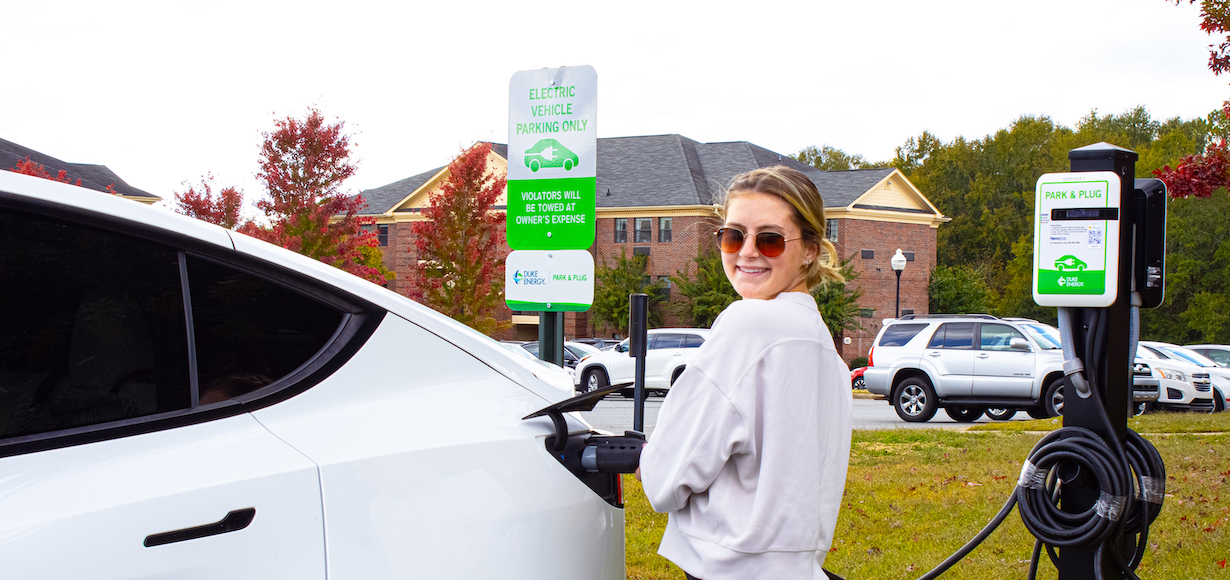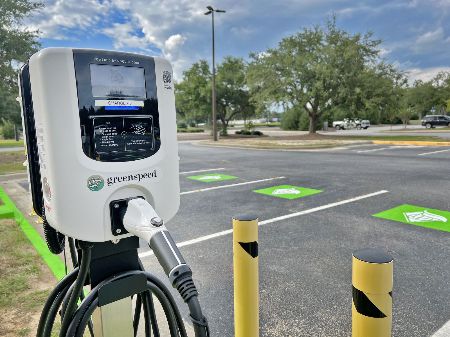Key Innovations in the EV Sector You’ll Find in Today’s Buy EV Charging news
Key Innovations in the EV Sector You’ll Find in Today’s Buy EV Charging news
Blog Article
Leading EV Charging Information: Key Updates on Framework and Technology

Current Developments in Fast-Charging Innovation

Additionally, advancements in battery modern technology, including improved thermal administration systems and higher power density batteries, complement fast-charging capabilities. These growths minimize the danger of battery destruction during fast charging, making certain longevity and efficiency for EV owners.
In addition, the assimilation of smart billing remedies is enhancing individual experience, allowing real-time tracking and dynamic rates models. EV Charging news. This flexibility enables vehicle drivers to maximize charging times and expenses based on grid demand
As car manufacturers remain to invest in fast-charging networks, the cooperation between industry stakeholders is crucial. Partnerships between billing terminal suppliers and automotive makers are leading the way for considerable protection, eventually cultivating a much more robust EV ecological community. These advancements are critical in supporting the transition to lasting transport.
Government Efforts for Charging Development
Government initiatives play an important duty in the expansion of electrical automobile (EV) billing framework, promoting the change to lasting transportation. Numerous federal and state programs are being carried out to boost billing accessibility, minimize the economic concern on consumers, and promote the adoption of electrical lorries.
Significantly, the U.S. federal government has actually allocated substantial funding through the Infrastructure Investment and Jobs Act, which earmarks $7.5 billion for EV billing network growth across the nation. This funding is focused on deploying thousands of new charging stations, specifically in underserved areas, consequently dealing with variety anxiousness amongst prospective EV buyers.
In addition, numerous states are establishing legislation to improve the permitting process for charging station installations, which is crucial for increasing release. Rewards such as tax obligation credit reports and rebates for both consumers and organizations are also being presented to urge the installation of charging facilities.
Moreover, public-private partnerships are progressively becoming an emphasis, leveraging exclusive investment to match government financing. These efforts highlight a joint approach crucial for developing a reliable and comprehensive EV billing network, inevitably adding to a greener and more sustainable future.
Cutting-edge Battery Solutions Enhancing Efficiency
Reinventing the landscape of electrical lorry (EV) technology, cutting-edge battery remedies are substantially enhancing efficiency visit here and performance. Advances in battery chemistry, especially with lithium-sulfur and solid-state batteries, are causing boosted energy density, which permits for longer varieties and faster billing times. These brand-new battery kinds have the prospective to exceed traditional lithium-ion batteries by using greater capabilities while lowering weight, thereby enhancing overall car performance.
Furthermore, growths in battery administration systems (BMS) are enhancing energy usage and expanding battery life-span. Intelligent important source formulas check battery health and performance, enabling real-time modifications to billing and releasing procedures. This not just boosts the efficiency of the battery however additionally makes sure a much more dependable and lasting power resource for EVs.
In addition, the combination of reusing innovations is addressing the ecological influence of battery manufacturing and disposal. Innovations in second-life applications for EV batteries are facilitating their use in energy storage space systems, adding to a circular economic situation.
As these innovative battery solutions remain to develop, they promise to transform the EV market, making electrical vehicles a lot more appealing and obtainable to a broader audience while sustaining global sustainability objectives.
Partnership In Between Automakers and Charging Networks
Acknowledging the crucial need for a durable charging infrastructure, automakers are increasingly collaborating with billing network companies to enhance the EV ownership experience (EV Charging news). These partnerships intend to create a seamless charging environment that profits customers and sustains the transition to electric vehicles
Significant vehicle brands are signing up with forces with well established billing networks to expand their charging station protection, making sure motorists have access to practical and reputable charging alternatives. Collaborations with networks like why not find out more ChargePoint and Electrify America permit automakers to integrate billing options directly right into their lorries' navigating systems, directing customers to the local stations and giving real-time schedule updates.
Moreover, these collaborations commonly cause the advancement of fast-charging modern technologies that considerably reduce the time required to charge an EV. By merging sources and competence, car manufacturers and billing networks can innovate much faster, creating solutions that satisfy the growing demand for electrical wheelchair.
Furthermore, joint campaigns might additionally result in more standard billing methods, which can minimize consumer confusion and promote more comprehensive EV fostering. In general, these calculated alliances are pivotal in constructing a easy to use and effective billing facilities that meets the demands of an increasing electrical automobile market.
Obstacles Encountering EV Charging Facilities
As the electric car market proceeds to expand, several challenges are emerging that hinder the growth of a thorough charging facilities. One of the main obstacles is the insufficient variety of billing terminals, particularly in country and underserved city locations. This gap develops variety stress and anxiety among possible EV buyers, deterring them from making the button.
Furthermore, the absence of standardization in charging modern technology complicates the facilities landscape. Variations in plug kinds and billing rates can create confusion for individuals and increase functional complexities for billing network drivers.
One more pressing issue is the high cost associated with the installment and maintenance of charging stations, which can be a barrier for both personal businesses and public entities. Regulative hurdles and zoning constraints can postpone the release of billing facilities, hindering progression in increasing crucial services. Addressing these obstacles will be critical for promoting a robust EV ecological community that sustains the transition to lasting transport.
Verdict
In conclusion, the continuous advancements in EV charging innovation, supported by considerable government efforts and innovative battery options, are important for the development and efficiency of electric car framework. Collaborations between car manufacturers and billing providers further improve terminal protection, attending to the expanding need for accessible billing options. Despite difficulties that continue within the EV billing landscape, these advancements symbolize a favorable trajectory towards an extra efficient and lasting electrical car ecosystem.
Innovations in billing infrastructure have led to the growth of ultra-fast chargers qualified of supplying up to 350 kW of power, dramatically lowering billing times. Variations in plug types and charging rates can produce complication for users and raise functional complexities for charging network drivers.In verdict, the recurring developments in EV billing modern technology, supported by considerable government campaigns and cutting-edge battery options, are important for the expansion and performance of electric car infrastructure. Cooperations between car manufacturers and charging suppliers better boost station insurance coverage, attending to the growing demand for easily accessible billing options. Regardless of difficulties that continue within the EV billing landscape, these developments represent a favorable trajectory in the direction of a much more reliable and lasting electrical lorry ecological community.
Report this page